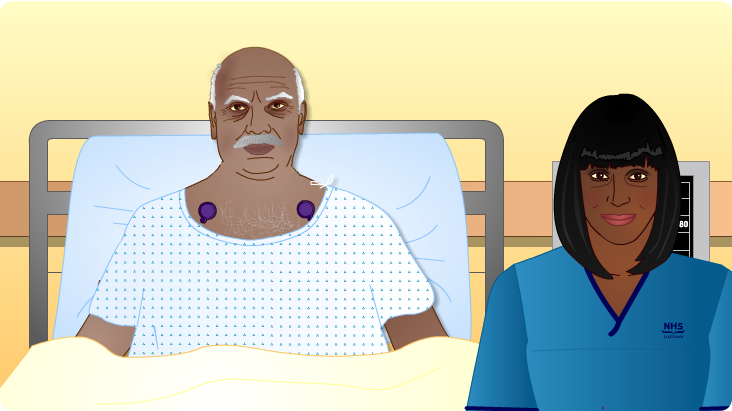Learning outcomes
- Define the term and outline the menu based pathway/phases of cardiac rehabilitation.
- Summarise the cardiac rehabilitation tools and services used to support patients.
- Gain an understanding of the importance of behavioural change within cardiac rehabilitation.
- Develop awareness of the evidence supporting secondary prevention.
- Develop awareness of discharge planning and ongoing community support following cardiac rehabilitation.
General Medical Disclaimer: The information, including but not limited to, text, graphics, images, recommendations, opinions and other material contained on or accessed through this website (or in any module or content accessible through this website) (together “Website”), is intended for general informational purposes only. The information should not be considered as professional medical advice, diagnosis, recommendations or treatment. The information on this Website is provided without any assurance, representations or warranties, express or implied. We do not warrant that the information on this Website is applicable to all healthcare practices, geographical locations, health needs or circumstances. We do not warrant that the information on this module is complete, true, accurate, up-to-date, or non-misleading. You should always seek the guidance of a qualified healthcare professional before making any decisions related to your health or wellbeing. Never disregard or delay seeking medical advice due to something you have read on this Website. The use of or any reliance placed on any information provided on or accessed through this Website is solely at your own risk. If you have any specific questions or concerns about your health, please consult a qualified healthcare provider or other qualified medical professional. Do not rely on the information on this Website as an alternative to medical advice from your doctor or other qualified professional healthcare professional or healthcare provider.

This is the module test for ‘HEARTe 4. Acute coronary syndromes’. It is strongly recommended that you work through the learning materials of the module prior to commencing this test. By going straight to the test you may miss out on valuable learning contained within the module. The answers to all the test questions are contained within the module. This information may have been provided in the ‘Additional Information’ boxes on some of the pages.
There are 10 questions and you must answer all of these correctly to obtain a certificate of completion.
You should allow approximately 10 minutes to complete the test.
On completion of this case you should have an understanding of:
- The Electrocardiogram (ECG) changes in ST Elevation Myocardial Infarction (STEMI) patients: Most patients will have ST segment elevation, but new left bundle branch block can also be seen. Since there are other potential causes of left bundle branch block, is important to consider the patient history and if possible to review old ECG”s.
- The initial monitoring and treatment that may be undertaken by paramedics prior to transfer to an intervention centre.
- The fact that a cardiac arrest is not uncommon in myocardial infarction and requires immediate life support from either bystanders or health care professionals.
- That primary Percutaneous Coronary Intervention (PCI) is the treatment of choice provided the patient can be transferred to the appropriate centre within 120 minutes of attendance by the ambulance service.

This is the module test for “HEARTe 3. Stable coronary artery disease”. It is strongly recommended that you work through the learning materials of the module prior to commencing this test. By going straight to the test you may miss out on valuable learning contained within the module. The answers to all the test questions are contained within the module. This information may have been provided in the “Additional Information” boxes on some of the pages.
There are 10 questions and you must answer all of these correctly to obtain a certificate of completion.
You should allow approximately 10 minutes to complete the test.

This is the module test for “HEARTe 2. Primary prevention of heart and cardiovascular disease”. It is strongly recommended that you work through the learning materials of the module prior to commencing this test. By going straight to the test you may miss out on valuable learning contained within the module. The answers to all the test questions are contained within the module. This information may have been provided in the “Additional Information” boxes on some of the pages.
There are 10 questions and you must answer all of these correctly to obtain a certificate of completion.
You should allow approximately 10 minutes to complete the test.
Taken from: ‘Gaun Yersel’ – The Self Management Strategy for Long Term Conditions in Scotland, Principles of Self Management

After transfer to CCU, Naveed asks the nurse why he has sore ribs. The staff nurse explains that his heart stopped in the ambulance and he needed CPR and an electric shock to start it again. Naveed then looks really anxious and asks whether this will happen again and starts to cry. The nurse provides him with information about what causes heart attacks, what treatments are necessary and how Naveed can begin the process of getting back to normal.
She explains that it is a normal reaction after a cardiac event or procedure is to feel anxious and emotional and during further involvement with cardiac rehabilitation this will be explored and monitored as appropriate.
Naveed is monitored for the next 12 hrs and prescribed regular post MI drugs. He has an echocardiogram the following day which shows no significant damage to his heart. He is moved to another cardiac ward where he has more contact with other patients and begins to mobilise.
During this time he meets the cardiac rehabilitation team and learns more about his recovery and is ready for discharge a few days after this. Both he and his family have lots of questions about his heart attack and the cardiac rehabilitation nurse also gives him booklets to help them retain and understand all of the information he is given. The ward pharmacist reviews his medication and gives him more information regarding this.

This is the module test for ‘HEARTe 1. Healthy heart and investigations’. It is strongly recommended that you work through the learning materials of the module prior to commencing this test. By going straight to the test you may miss out on valuable learning contained within the module. The answers to all the test questions are contained within the module. This information may have been provided in the ‘Additional Information’ boxes on some of the pages.
There are 10 questions and you must answer all of these correctly to obtain a certificate of completion.
You should allow approximately 10 minutes to complete the test.




